Nunnery of the Order of Saint John in Alguaire
Thanks to the agreement established between the University of Barcelona and the Alguaire City Council, our research project plans to carry out various archaeological excavation campaigns in the site of the ancient nunnery of the Order of Saint John in Alguaire.
Location
The nunnery of the Order of Saint John in Alguaire is located in the municipality of the same name, in the region of Segrià, 15 km north of Lleida. The remains of the site are located on the crag known as Serra del Convent, which, from a privileged position, dominates much of the extensive plain of Segrià.
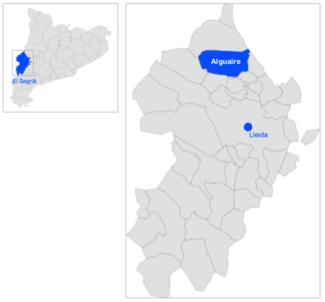
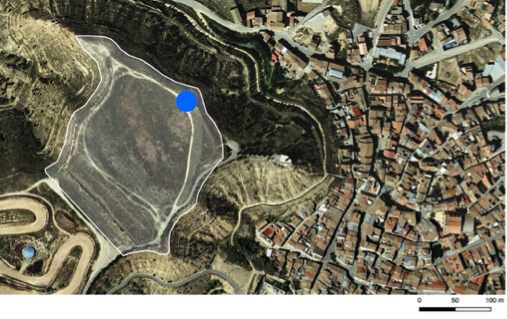
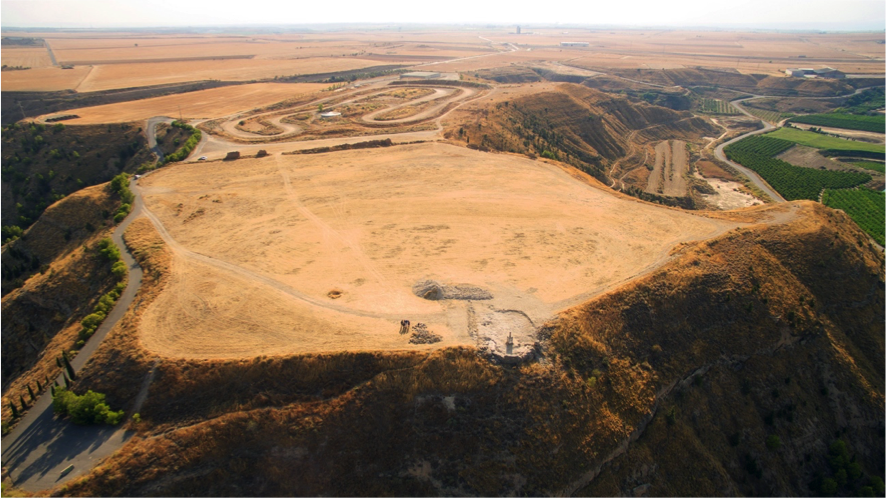
Brief historical summary
This nunnery is heir to the one that had been previously founded in Cervera (1192), which, perhaps seeking greater isolation, moved to the Serra del Convent in 1250. It was a nunnery of the Order of Saint John, where women led a life of prayer and isolation in fortified and solitary settlements, like in those in Grisén (Zaragoza, 1174), Sigena (Huesca, 1188), La Rápita (Montsià, 1290), Salinas de Añana (Álava, 1396) or Seville (1490).
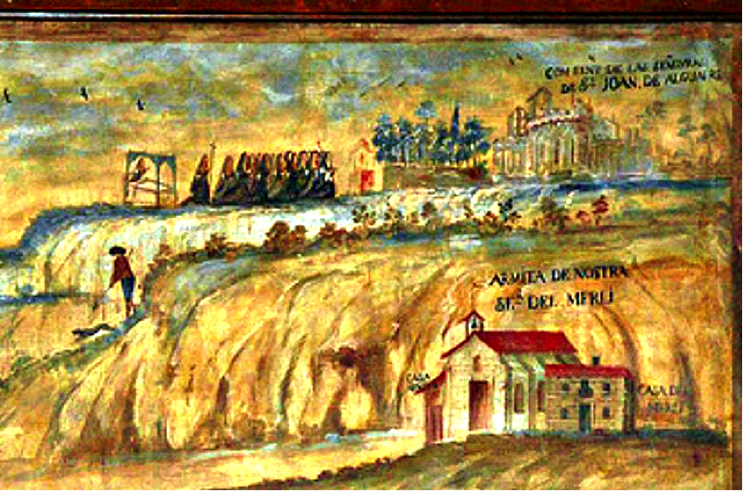
The construction of the nunnery of Alguaire lasted about fourteen years, and the nuns moved to the new settlement around 1264. Thanks to the details provided by the engravings of the French engineer Sebastien de Pontault, Lord of Beaulieu, in the context of the Reapers’ War, and to the numerous extant written sources, we know that the nunnery constituted a rectangular and closed area of almost 35,700 m2 with several different structures that had been built over time.
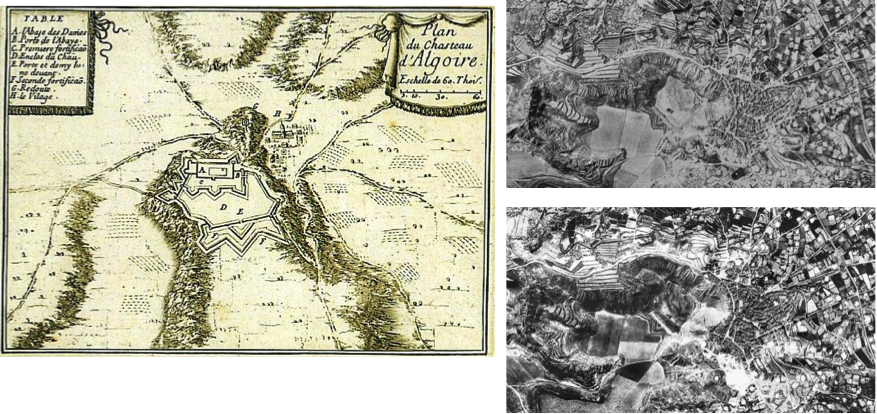
Beaulieu's engravings show the two walled precincts built during the Reapers' War, as well as its main buildings: the church, the cloister, and the convent house. Thanks to the research carried out by the historian Josep Lladonosa, we know that, at least in the mid-seventeenth century, the church had a Latin cross plan and a single nave, with pillars decorated with engaged columns and capitals with simple abaci that supported the pointed arches underneath the pointed vault. The cloister, like the monastery, was a two-storey rectangular building. It gave access to the church, the chapter house and the refectory, as well as to the chambers of the prioress and the nuns. The monastery had also a library, an archive, and a scriptorium.
The monastery has a long and extensive history. In 1640, in the midst of the Reapers' War, the community had to take refuge in the Episcopal Palace of Lleida. Being located in the border area, and due to the many economic difficulties it was facing, the community asked for relocation to Barcelona, where they settled in 1644. Shortly afterwards, the plague struck the city of Barcelona - even the prioress died - and the nuns, after eleven years of absence, returned to Alguaire to take refuge. The return to the monastery was not easy, because the complex was in a state of ruin and a structural reform was necessary.
The economic difficulties and the poor condition of the building led them to request, in 1684, the definitive transfer to Barcelona. Despite the initial opposition of the bishopric of Lleida, the transfer was authorized and the nuns definitely abandoned Alguaire on 28 March 1699, occupying the palace of the Grand Prior of Catalonia. They remained there, although not without difficulties and interruptions, until 1880, when they were transferred to Sant Gervasi de Cassoles and later, in 1976, to the new nunnery in Valldoreix, which was abandoned in 2007 due to a lack of religious vocations.
Description of the archaeological remains
Archaeological excavations at this site began in 2016, thanks to the collaboration agreement established between the University of Barcelona and the Alguaire City Council. Since then, a total of three archaeological campaigns have been carried out, thus allowing to document the architectural structure of the nunnery church at the apse and the first section of the nave. The stone floor tiling has also been located, along with other several phases of paving, the entrance door to the cloister, and the bases of the arches that constituted its internal structure.
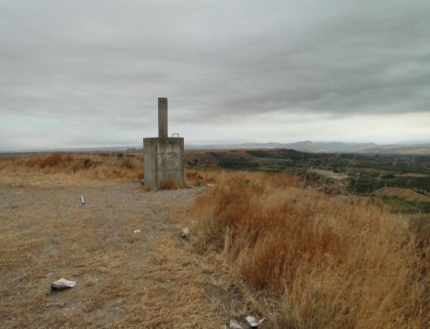
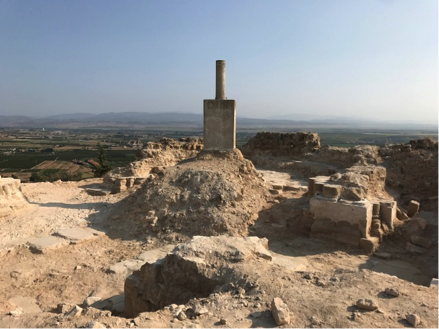
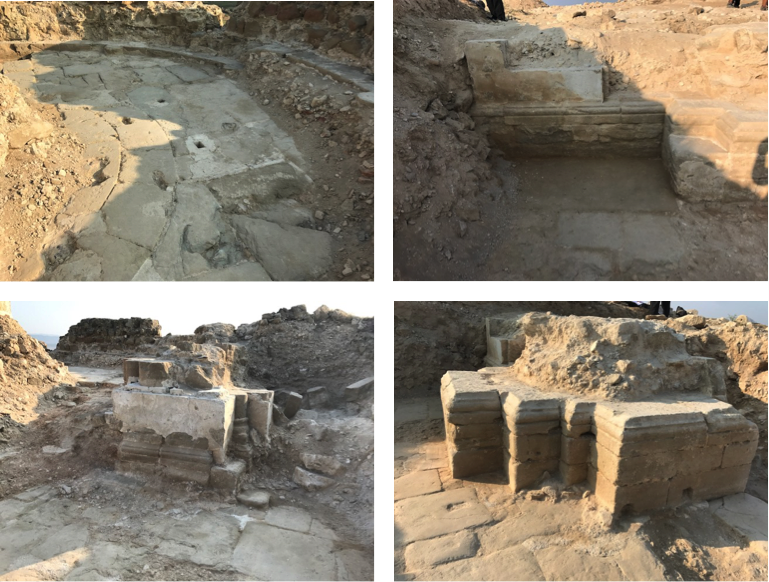
the entrance door to the nave, and the entrance door to the cloister.
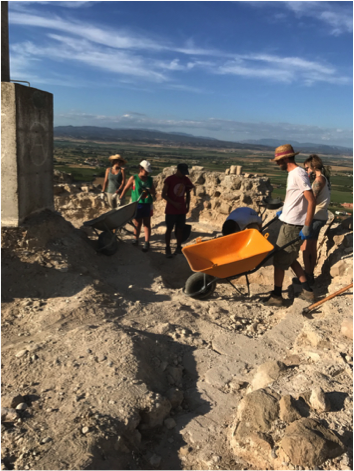
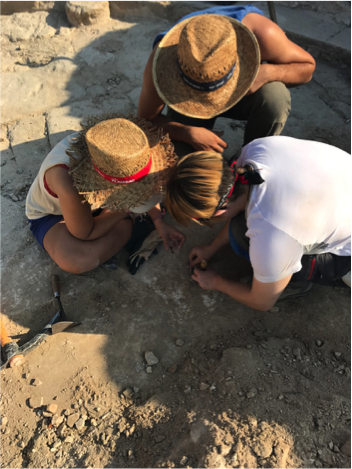
Commitment to ICTs in Archaeology
From the point of view of the documentation and study of the archaeological record, our project is committed to the application of new technologies, with the use of Geographic Information Systems (GIS) and digital photogrammetry techniques, some examples of which are shown below.
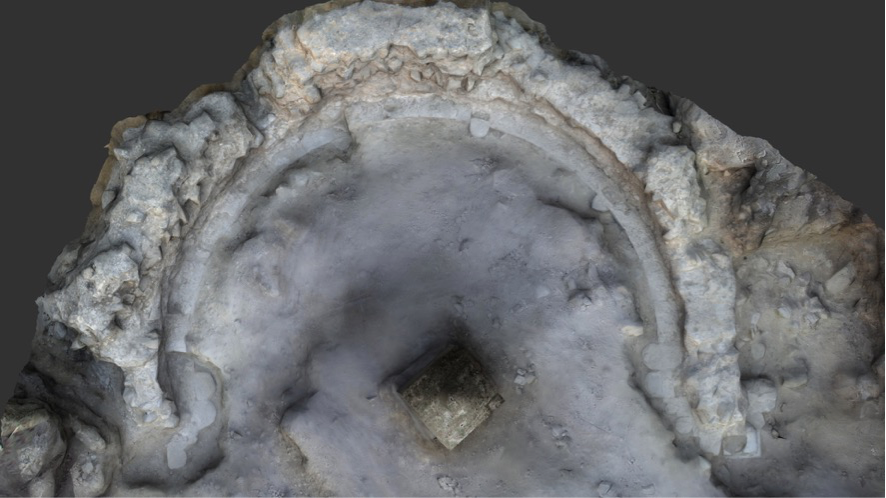
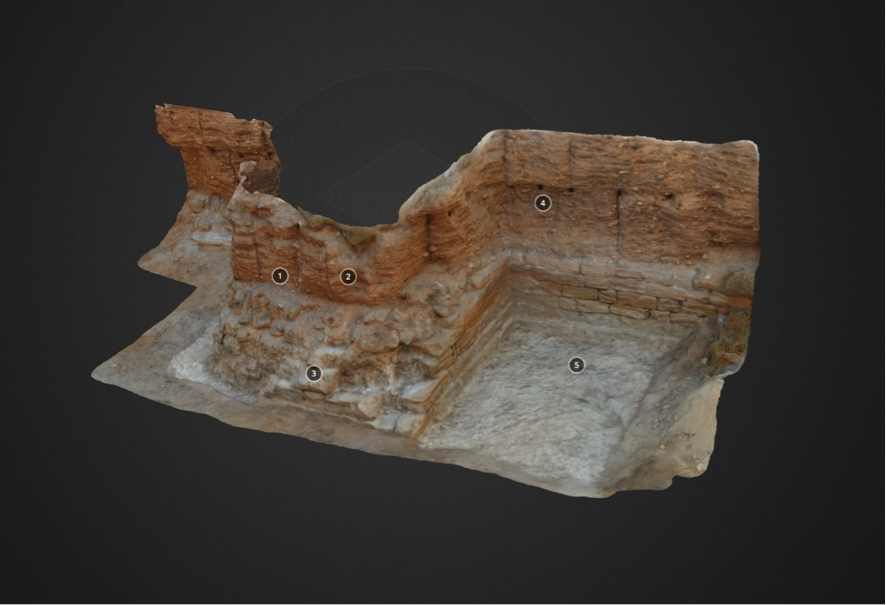
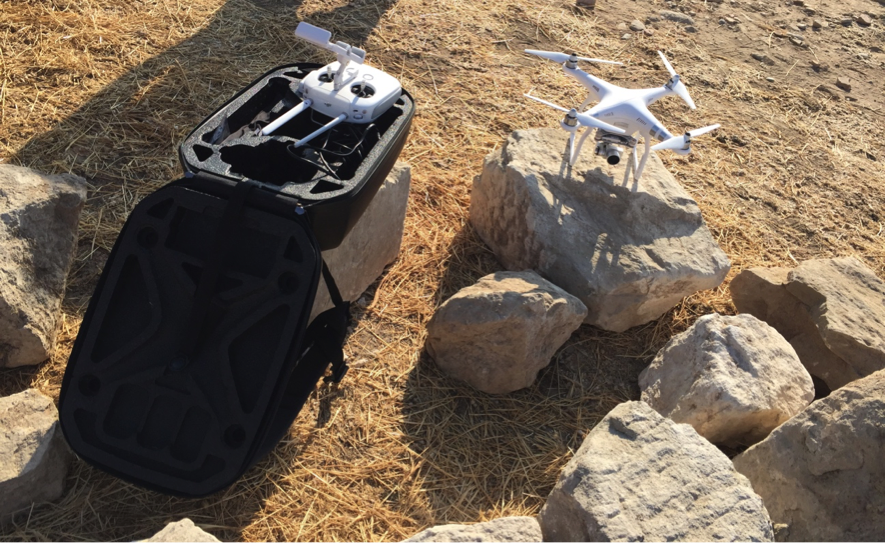

Public Engagement
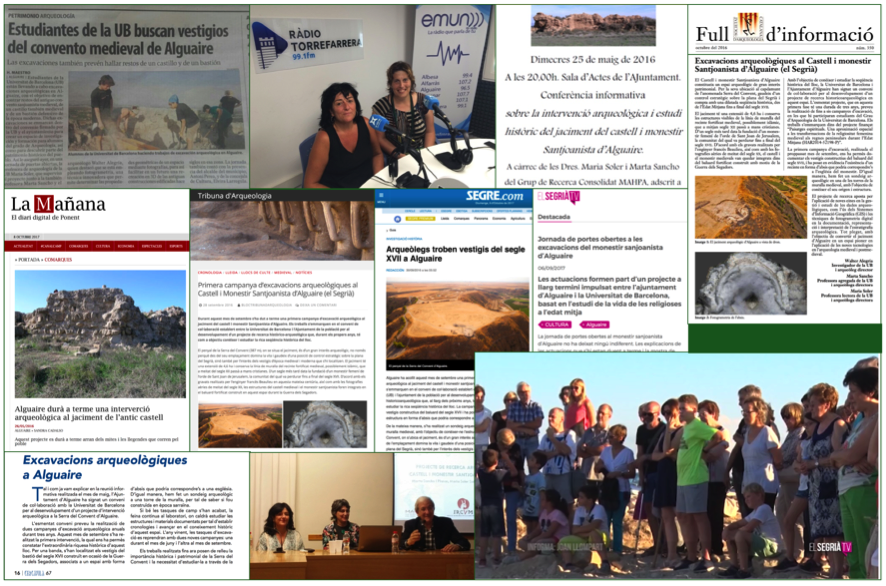
Bibliography
ALTURO I PERUCHO, Jesús (1993): “Marquesa de la Guàrdia, fundadora, comendadora i benefactora del monestir femení de la Mare de Déu d’Alguaire de l’Orde de Sant Joan de Jerusalem”, Illerda, 50, pp. 51-54.
ALTURO I PERUCHO, Jesús (1999): Diplomatari d’Alguaire i del seu monestir santjoanista de 1076 a 1244. Barcelona, Fundació Noguera; Lleida, Pagès.
BERTRAN I ROIGÉ, Prim (1977): “Les ordinations del convent d’Alguaire”, Cuadernos de Historia económica de Cataluña, 17, pp. 25-56.
BERTRAN I ROIGÉ, Prim (2007): “Els Ordes religiosos-militars: els Templers i els Hospitalers al Bisbat de Lleida”. Arrels cristianes: presència i significació del cristianisme en la història i la societat de Lleida. Lleida, Pagès editors, Bisbat de Lleida, pp. 159-184.
BRUFAL, Jesús (2013): “La medina andalusina de Lleida en el segle XI: Identitat i societat”. Rivista dell’Istituto di Storia dell’Euorpa Mediterranea, 10, pp. 219-244.
COLL SANABRA, Araceli (2009): La Senyoria jurisdiccional a Alguaire (1301-1310): edició i estudi, Tesi doctoral, Universitat Autònoma de Barcelona.
COLL SANABRA, Araceli (2010): "El domini senyorial a Alguaire (1301-1310), a través dels seus documents", Paratge 23: 93–115.
LLADONOSA, Josep (1985): L’art decoratiu al monestir de Santa Maria d’Alguaire, a través dels llibres de visites dels grans priors de Catalunya. Parlament de l’Acadèmic Electe Sr. Josep Lladonosa i Pujol amb motiu del seu ingrés a l’Acadèmia. Lleida, Reial Acadèmia catalana de les Belles Arts de Sant Jordi.
LLADONOSA, Josep (2007): Història de la Vila d’Alguaire i el seu Monestir Santjoanista. Lleida, Gràfiques Larrosa.
MIRET I SANS, Joaquim (1899): Noticia històrica del monestir d’Alguaire, de la Orde Sagrada i Militar del Hospital de Sant Joan de Jerusalem. Barcelona, Tipografia «L’Avenç», 64 pàgines.
PALACIOS SANCHEZ (1977): La sagrada, soberana e ínclita orden militar de San Juan de Jerusalén (Orden de Malta) y sus monasterios de religiosas en España. Logroño, Ochoa.
PAULÍ MELENDES, Antoni (1951): El Real Monasterio de Nuestra Señora de Alguaire y San Juan de Jerusalén de Barcelona, 1250-1950. Barcelona, Bartrés.
RINCÓN GARCÍA, Wifredo (2015): “Patrimonio artístico de la Orden de San Juan de Jerusalén en España: una aproximación y algunos ejemplos”. Madrid, Universidad Nacional de Educación a Distancia, pp. 859-928.
